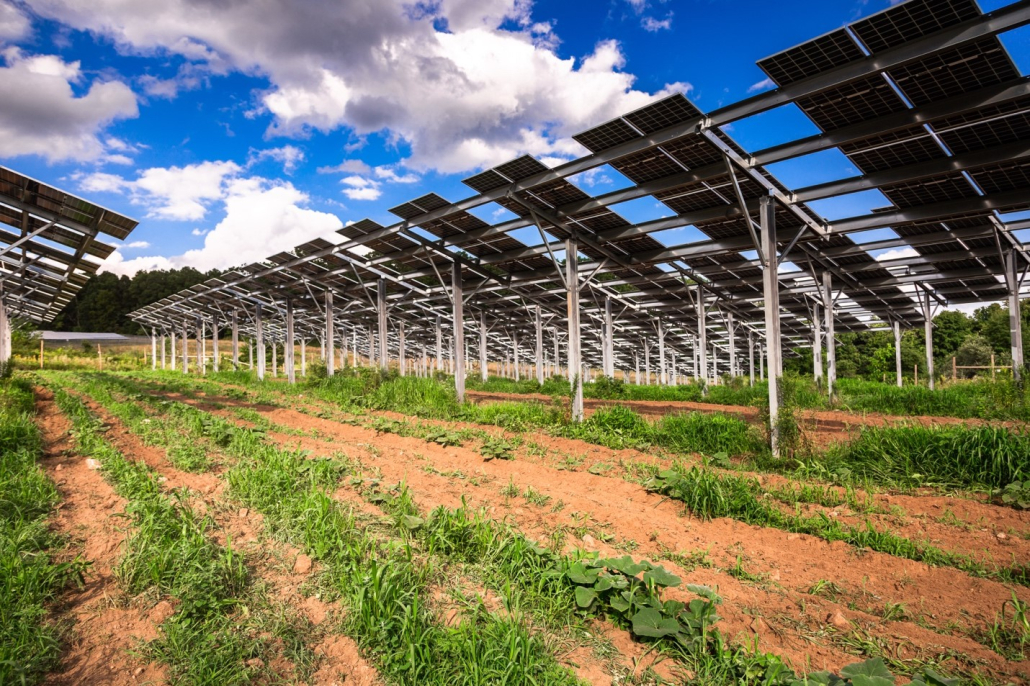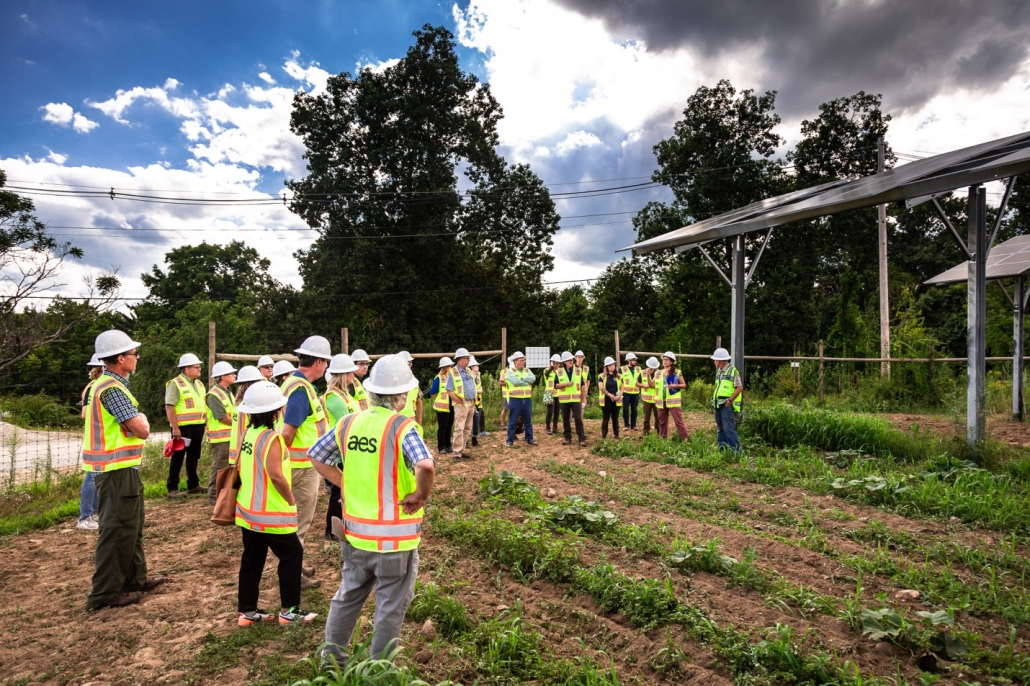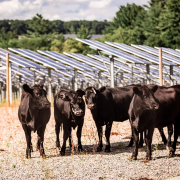Farmland, Family, and the Future of Solar Energy
By Stephanie Hince, AES
Although Grafton, Massachusetts, is just an hour west of Boston, life there is very different. Grafton is a friendly country town with a lovely historical feel. It has been a farming community for centuries, where thriving cotton, grist, and paper mills once dotted the landscape.
Whereas the Quinsigamond River once powered numerous mills, a newly constructed solar farm owned by AES is incorporating two Grafton traditions: clean energy and agricultural production. Let’s explore how our solar project brings together key stakeholders to help protect farmland in Grafton and beyond.
Grafton Solar’s On-site Agricultural Production
This solar installation is located on Knowlton Farm, a family farm operating for over 150 years. Instead of merely leasing fallow farmland for the project, the solar farm was designed with on-site agricultural production and research in mind from the start.
Grafton Solar is a 2-megawatt community solar farm with a 1.4-megawatt battery energy storage system. Many stakeholders have come together with a shared vision of clean energy, food production, and learning, which is making this endeavor a success.
Our current and prospective project partners include the U.S. Department of Energy, Massachusetts Department of Energy Resources, Massachusetts Department of Agricultural Resources, UMass Amherst, American Farmland Trust, and Cornell University. In December 2020, AES acquired the Grafton Solar project from BlueWave.
What Made This Solar Farm Unique from Day 1
An agricultural plan was created early in the design phase as a collaboration between Paul Knowlton, a fifth-generation farmer and current operator of Knowlton Farms, Iain Ward of Solar Agricultural Services, and BlueWave Solar. Today, that plan has come to fruition. With a keen eye, passersby will notice something very different at our project site.
Borrego, the construction contractor, elevated the solar modules to a height of 8 to 14 feet and created large inter-row spacing to allow cattle grazing and access for farm equipment. The agricultural integration component of the project began last May with the planting of squash and lettuce, as well as cattle grazing.
There is still much to be learned. Solar developers and farmers need a greater understanding of how to make widespread use of agrivoltaics cost-effective and practical. Thus, Grafton Solar provides opportunities to advance its application on other project sites and by other solar developers across the U.S.

Grafton Solar is Now a Living Laboratory
We intentionally reserved a section of the project area for new and existing research partnerships – Grafton Solar is an official hub of activity for learning about agrivoltaics. Research partners, UMass Amherst and the American Farmland Trust, are working to establish site trials to assess crop productivity, soil health, and micro-climatic conditions, thanks to a grant from the U.S. Department of Energy Solar Energy Technology Office (SETO). Once available, research information will be made publicly available so that others in the solar and agricultural industries can learn and benefit from their findings.

Solar Incentives Helped Make This Innovative Project Possible
In Massachusetts, revenue for solar projects is provided through the SMART program, which starts with a fixed compensation rate for projects. A project can obtain different adders based on project attributes, which increases the rate and therefore the benefits to the project developer and landowner. Some of these adders include making a project a community solar farm, adding battery storage, or having a dual-use agricultural component. Grafton Solar does all three.
Community solar projects expand access to renewable energy and allow subscribers like households, businesses, educational institutions, municipalities, and others to experience the same benefits of solar power without having to install a solar array on their own property. Battery storage helps to mitigate the intermittent nature of solar energy by storing solar energy when production is high and electricity demand is low and promotes reliable, carbon-free power by making solar energy available when utility companies need it most. Thus, it reduces the need to use more polluting power plants when power demand is high.
Grafton Solar is built around the community solar model, incorporates battery storage, and is supporting a legacy of agricultural production at Knowlton Farm – a win-win-win. By leveraging Massachusetts’ innovative state-level solar incentives (which includes the only rate-adder for agrivoltaics in the U.S.), Grafton Solar is delivering multiple co-benefits to the community and showcasing that solar projects can do much more than produce power on site.
Protecting Farmland When Developing Solar Energy Projects
Grafton Solar is AES’ first agrivoltaic site in the Northeast and is consistent with our vision to provide the smarter, greener energy solutions the world needs. According to a report by the American Farmland Trust, the U.S. lost or compromised 2,000 acres of farmland and ranchland every day from 2001 to 2016.
If this trend continues, an area nearly the size of South Carolina will be lost between 2016 and 2040, which could be detrimental to food security. Many farmers across the U.S., like Paul Knowlton, are looking for new revenue streams and ways to keep family farms operating for future generations. In addition to producing food, family farms are also about preserving a way of life.
At AES, we understand the importance of protecting farmland when integrating renewable energy projects into the landscape. Solar energy development and farm viability can go hand-in-hand when taking a thoughtful, dual-use approach.
Using Partnerships to Maximize Opportunities
We understand the importance of land and are actively working to create synergies between renewable energy development and agricultural land use. In addition to successfully co-locating crop growth and grazing at Grafton Solar, we have implemented active sheep grazing on thousands of acres of land at utility-scale solar sites, and we are participating in research partnerships in various regions across the U.S. to better understand how we can harvest clean energy and food from the same land.
We know that the success of our company is only as strong as the partnerships within the communities where we operate, so we develop, build, and manage projects that maximize value to a variety of stakeholders. Ultimately, we need both clean energy and productive farmland, not just one or the other.
Grafton Solar provides an excellent opportunity to collaborate with the research community and the Knowlton family to further our understanding of how to make agrivoltaics practical and more widespread. The project symbolizes preserving a way of life that spans many generations while embracing innovative clean energy technologies that promote food security, reliable energy, and a cleaner environment.



